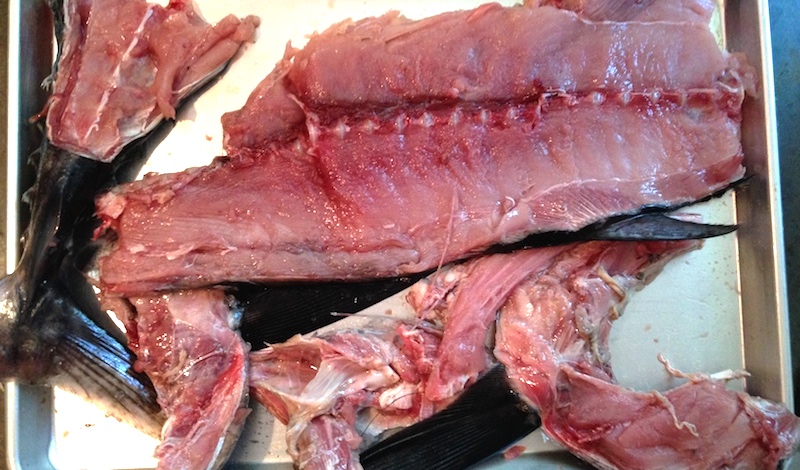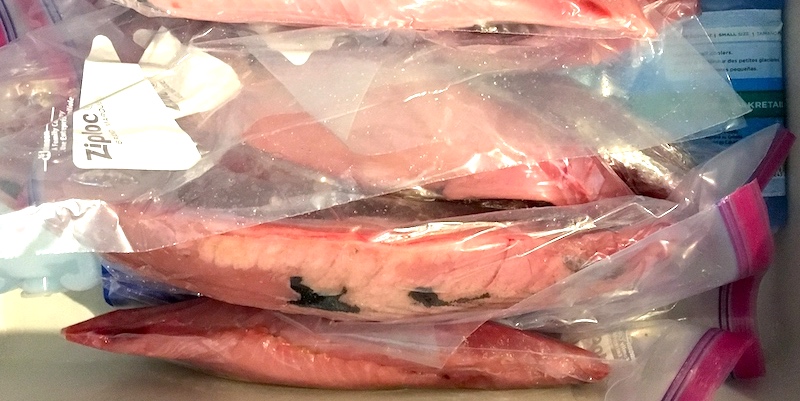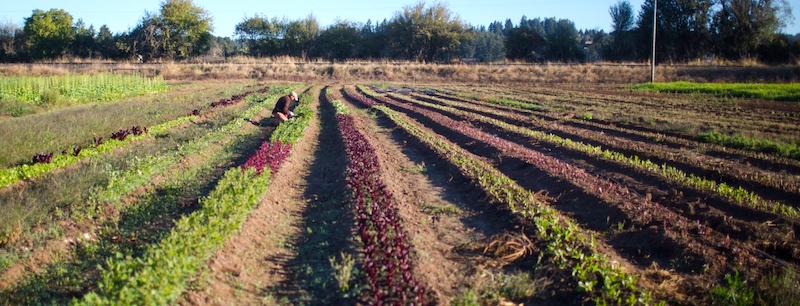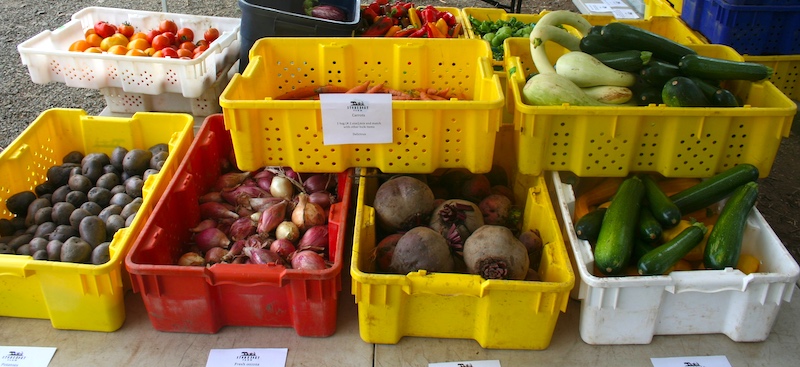
End of an Era: Vino Wine Shop Sold after 25 Years
The following popped into my e-mail in-box and, with his usual tell-it-like-it-is directness, Bruce Bauer—longtime readers know him as my (much) younger brother—made the big announcement:
"This is a tough email to start so I’m jumping in the deep end and letting you know that after an incredibly rewarding, at times frustrating, yet so f*cking fulfilling 25 year run here at the wine shack I’m going to be selling VINO and retiring (apparently I’m older than I think I am 😬). I've gotta admit I'm feeling a bit out of my element with the impending change, but also excited in so many ways. Now I hear y’all going, “But what about us?,” and I just want you to know I’ve found a great buyer, someone I’ve known for years in the business, who couldn’t be more perfect to take over and take VINO to the next level."
Why am I posting about my brother's wine shop on this blog that's about local food, you might ask?

Well, without his inspiration I might well have never started Good Stuff NW, much less become a writer. You see, I was a freelance advertising art director at the time, helping clients with their branding and marketing and just dipping my toe into this new medium called the World Wide Web. It was 2006 and my baby brother was on a whirlwind tour of France and Spain, writing about all the amazing food and drink he was stumbling across via a platform called Blogger. Needless to say, his always-engaging writing was a draw, of course, but so was the idea of this easy-to-use new medium. (You can read more about my writing journey here.)
But back to Vino.
He'd always been a crazy smart kid who had an uncanny knack for relating to all kinds of people—I've consistently said he got all the "nice" genes in the family—so when he started a career as a lumber broker I thought, "Good for him, he'll make lots of money and be secure," while the big sister part of me was thinking, "He's so much more talented and creative…I hope he's happy."

Fortunately that only lasted a few years, whereupon he co-founded Shakers Café in the the early 90s in the nascent, not-yet-named Pearl District in Northwest Portland. Smashingly successful with lines out the door for breakfast and lunch—its tagline "If Your Mother Could Cook" perfectly summed up its take on homemade classics—he also began broadly exploring what would become his passion for lesser-known European, American and, particularly, Northwest wines.
He eventually sold the café, launching his first wine shop on Southeast Hawthorne called Portland Wine Merchants, which was followed not much later with the opening of County Cork, an Irish-themed pub on Hawthorne—coincidentally (and somewhat spookily) also the site of our paternal grandfather's moving business back in the 1930s—which eventually relocated to Northeast Fremont.

Bruce sold the Hawthorne wine shop to his business partner and opened Vino in the Sellwood neighborhood, which just before the turn of the millenium was a quiet street populated by antique stores and not much street traffic. He quickly drew in a crowd of regulars, fans from his Hawthorne shop as well as appreciative neighborhood folk drawn to his affordable selection, extensive knowledge and lack of pretense on the subject, who were very excited to have a place to gather on Fridays for wine tastings.
The move to its current location on Northeast 28th wasn't without some fraught moments—moving to a promising new neighborhood but leaving the community that had built up around the shop was not easy—but it proved to be both timely and prescient. The street soon exploded with notable small restaurants, bars, a food cart pod and many small businesses, with Vino benefitting from the increased street traffic as well as the new outdoor courtyard for tastings.
As Bruce wrote in wrapping up his e-mail, "It’s been amazing and I can’t say strongly enough how much better my life has been because of you guys and what you helped VINO become. Thank you for coming along for the ride!"
Photo of yours truly at a Vino wine tasting many moons ago courtesy Laurie Harquail.

 The greenhouse is looking pretty empty of growing things now, though it's currently drying down the shallots—they're nearly done which is good because a whole lot of onions need to get in soon! We managed to get some potatoes in the ground while the soil was mostly dry mid-week, and before it started to rain again today. The rain is pretty nice for the newly seeded and newly planted crops we have out there—they all look good. It's also got us a new flush of weeds!
The greenhouse is looking pretty empty of growing things now, though it's currently drying down the shallots—they're nearly done which is good because a whole lot of onions need to get in soon! We managed to get some potatoes in the ground while the soil was mostly dry mid-week, and before it started to rain again today. The rain is pretty nice for the newly seeded and newly planted crops we have out there—they all look good. It's also got us a new flush of weeds!


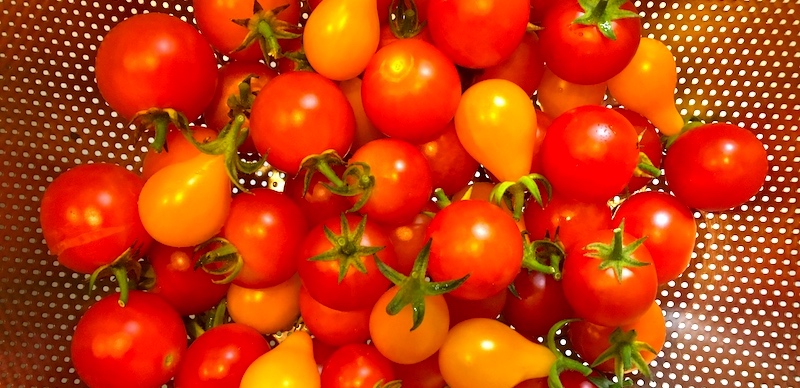 Whether you can stroll out to your garden bed and pluck your cherry tomatoes right off the vine or pull out a pint of little red orbs from your farmers' market stash, all you'll need is garlic, a tin of anchovies and olive oil to complete the dish. It's so simple you could whip it up while your guests sip gazpacho from tiny glass cups, but whether you choose to do that or just toss it in a bowl and put it in front of your family with a salad, I guarantee it'll be a dish you'll be pulling out again and again in tomato season.
Whether you can stroll out to your garden bed and pluck your cherry tomatoes right off the vine or pull out a pint of little red orbs from your farmers' market stash, all you'll need is garlic, a tin of anchovies and olive oil to complete the dish. It's so simple you could whip it up while your guests sip gazpacho from tiny glass cups, but whether you choose to do that or just toss it in a bowl and put it in front of your family with a salad, I guarantee it'll be a dish you'll be pulling out again and again in tomato season.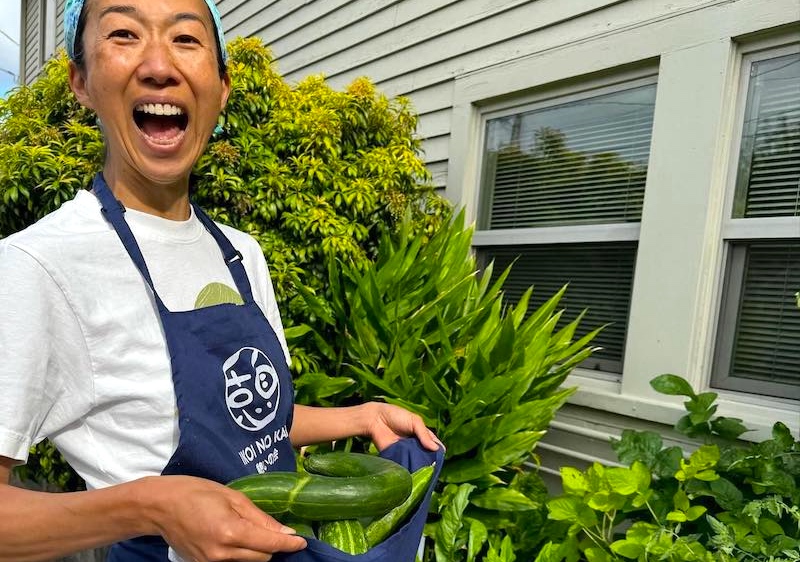


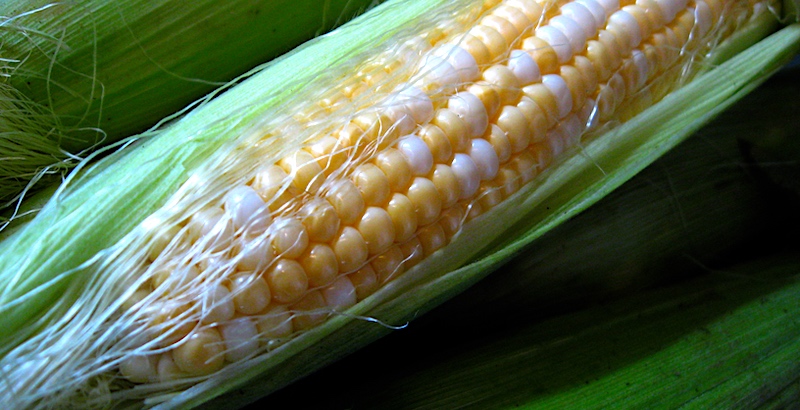
 Across the street in front of our house was another row of houses identical to ours, beyond which stretched another field, this one planted with row upon row of corn. All the kids on our street would play hide-and-seek in that field, losing each other in the sameness of the shadowy stalks that stretched into the sky, their tassels glowing in the evening light. During the late summer I'd often wander off into the field on my own and pick an ear or two, peeling back the green husk and nibbling the sweet raw corn that always tasted better than anything boiled and buttered, and only emerge when I heard my mother calling from the front porch to come in for dinner.
Across the street in front of our house was another row of houses identical to ours, beyond which stretched another field, this one planted with row upon row of corn. All the kids on our street would play hide-and-seek in that field, losing each other in the sameness of the shadowy stalks that stretched into the sky, their tassels glowing in the evening light. During the late summer I'd often wander off into the field on my own and pick an ear or two, peeling back the green husk and nibbling the sweet raw corn that always tasted better than anything boiled and buttered, and only emerge when I heard my mother calling from the front porch to come in for dinner.
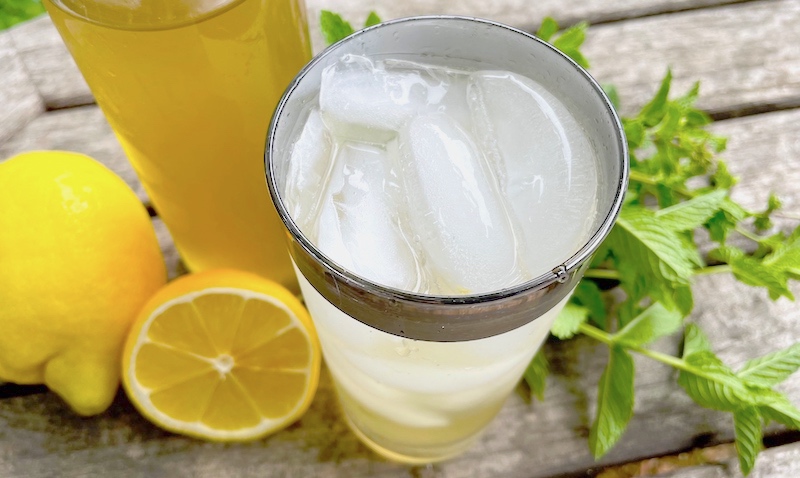 This year, just as the early July heat wave was hitting the Northwest with a vengeance, our
This year, just as the early July heat wave was hitting the Northwest with a vengeance, our 


